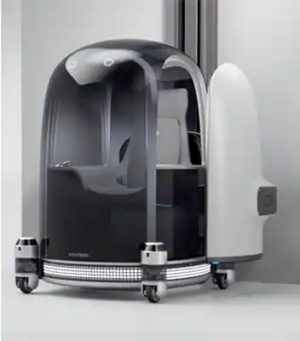Hyundai Motor Group and Boston Dynamics have earmarked US$400 million to establish the Boston Dynamics AI Institute, with the goal of making fundamental advances in artificial intelligence (AI), robotics and intelligent machines.
The Institute's culture is designed to combine the best features of university research labs with those of corporate development labs while working in four core technical areas: cognitive AI, athletic AI, organic hardware design as well as ethics and policy.
"Our mission is to create future generations of advanced robots and intelligent machines that are smarter, more agile, perceptive and safer than anything that exists today," said Marc Raibert executive director of newly-launched Boston Dynamics AI Institute.

Experts across AI, robotics, computing, machine learning and engineering will develop technology for robots and use it to advance their capabilities and usefulness. The Institute plans to hire AI and robotics researchers, software and hardware engineers, and technicians at all levels.
"The unique structure of the Institute — top talent focused on fundamental solutions with sustained funding and excellent technical support — will help us create robots that are easier to use, more productive, able to perform a wider variety of tasks, and that are safer working with people."
In addition to developing technology with its own staff, the Institute plans to partner with universities and corporate research labs.
The Institute will be headquartered in the heart of the Kendall Square research community in Cambridge, Massachusetts.
On track with its smart mobility provider transformation
The launch of the institute follows on the heels of Hyundai’s acquisition two months ago of Boston Dynamics from SoftBank in a deal valued at US$1.1 billion, giving the car manufacturer an 80% stake in the mobile robot firm.
Hyundai’s move towards robotics goes beyond expanding our capabilities Its Boston Dynamics acquisition is part of the step strategic transformation into a smart mobility solution provider. The deal is also expected to allow the Group and Boston Dynamics to leverage each other’s respective strengths in manufacturing, logistics, construction and automation.

Already, Hyundai on its own has invested substantially in the development of autonomous driving, artificial intelligence (AI), Urban Air Mobility (UAM), smart factories and robots.
At CES in January this year, the car manufacturer has presented a universal tool dubbed the Plug & Drive Module (PnD), an all-in-one solution with intelligent steering, braking, in-wheel electric drive, and suspension hardware—all in a single-wheel unit. With infinite wheel rotation, the module is extremely flexible and can move interactively within surrounding environments with LiDAR and camera sensors—it’s not only a reinvention of a wheel but also a reinvention of the way we might use wheels in the future.
“In the world to come, you won’t move your things. Things will move around you,” said Dong Jin Hyun, vice president and head of robotics at Hyundai, during the world’s biggest electronics show held in Las Vegas.
As a mobility company, Hyundai’s ultimate goal is to create unlimited Mobility of Things (MoT) ecosystem based on robotics technology which traditionally inanimate objects become mobile, providing seamless mobility-on-demand as mobile connectors in urban areas.
“The core idea behind this invention is to make traditionally inanimate objects mobile. Imagine thousands of different things, from small objects to large facilities are powered by the PnD module and Platform, serving personal and social needs. For example, we can change the set of layout requirements, from desks to office partitions, to fully utilise office space on demand. This will allow us not only able to configure the space but also be able to connect the spaces — expanding our reach to more places, covering isolated and secluded nooks and corners to better serve humanity,” said Hyun.

Hyundai also hopes that its deeper foray into robotics, ushered by its acquisition of Boston Dynamics, will enhance people's lives and promote safety. Specifically, Hyundai hopes the deal can open up countless possibilities for utilising robots as a new source of mobility.
Indeed, Boston Dynamics’ four-legged walking robot called has been deployed to carry out contact-free assessments of patients in hospital. In fact, Boston Dynamics has already proved that Spot can be a helpful companion in risky environments like Covid wards.
Spot can help medical staff monitor patients’ vital signs and reduce the risk of contamination. People are also beginning to welcome the idea of being treated by a robot in a healthcare setting
Ideal partner
It was at CES this year that Hyundai and Boston Dynamics showed the first hint of their partnership, showcasing VEX, a wearable robot that helps humans to protect their bodies and enhance their own strength.
“The next-generation wearable robot will continue to be developed, eventually allowing us to do extraordinary things—from lifting heavy payloads to saving lives,” said Raibert.
Boston Dynamics launched its first commercial robot called Spot in June 2020. It now hundreds of robots operating in a variety of industries, including power utilities, construction, manufacturing, oil and gas, and mining. The company also recently unveiled Stretch, its first commercial robot specifically designed for warehouse facilities and distribution centres.
Boston Dynamics’ mobile robots have been successfully integrated into business operations of many of the world’s leading industrial firms.
Now, together with Hyundai, the company will create a robotics value chain, from robot component manufacturing to smart logistics solutions. In addition, Hyundai will support Boston Dynamics’ continued expansion of its product line and global sales and service footprint.





